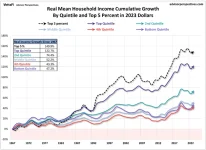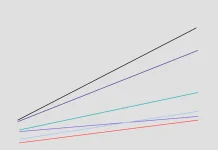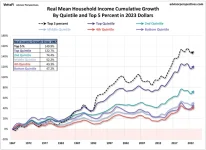- Joined
- Jan 1, 2020
- Messages
- 23,583
- Reaction score
- 7,485
- Location
- Southern OR
- Gender
- Male
- Political Leaning
- Conservative
Every industry and sub-industry is different when it comes to the application of AI in the workplace.There is a thread in the AI forum and a statment which I think is far more relevant to economics than AI. The thread was about predicting some future changes that AI will bring.
That said, this isn't an AI thread, it's econ, if you want to discuss AI, here is the thread the comment below came from
I find this statment is fundamental to understanding how economies work.
I'm not addressing aoc in this thread, I did it in the AI thread. But, for what it's worth I think that aoc is correct in that AI is a productivity tool. I use it almost every day at my job, and I know it's allowed me to do more work in less time.
But when looking how AI will affect the economy, that's a very different question. AI will increase potential productivity, but the actual effect will depend on our system of money and how it's used.
Let me see if I can explain.
Let's say right now there is some stock of money, let's say $1 trillion dollars and the labor productivity rate is $10 per/hr and there are 100 million who can reasonable be expected to be in the workforce (easy round numbers). If AI increases labor productivity by 50% over ten years there are two opposing factors in play. The result is that, per labor unit, people could create more per person resulting in the potential for more goods and services in the economy. However, there are two possibilities of what can be done with the capacity to create more output per person
Either, that you can create (roughly) 50% more "stuff" per hour worked or it takes 50% fewer people to produce the same amount of stuff.
So a company with 100 employees and a revenue of $100k, could, in theory reduce it's employees by 1/2 and maintain it's revenue of $100k, however, the companies labor costs would be reduced by 1/2 (keeping things simple) increasing profits.
There are a lot of people like AOC in this thread that want to cut the deficit to zero or even target a surplus, that would reduce government spending, and surpluses would reduce the stock of money circulating in the economy.
And, btw we haven't even included the fact that in 10 years, the population of a country can grow by 10%
Thus in 10 years the labor productivity could go from $10-$15hr and the number of people looking for work could go from 100 million to 110 million., thus potential output could go from 100 million people x $10 per unit our of labor, or $1 trillion in GDP, to: 110 million people x $15/ unit hour of labor or $1.65 trillion.
Now, what happens if we try to hold the amount of money constant?
Well, there was $1 trillion in money stock and $1 trillion in output, and in 10 years we'd have $1 trillion in money stock and potential output of $1.65 trillion.
Sounds great, but if you think this would ever happen in the real world, you fundamentally misunderstand the real world.
Even if all of that potential productivity were turned into real output (under almost every circumstance it wouldn't), it would result in extreme deflation. Money would increase in value as the supply of goods would increase and the money would stay the same or decrease.
In short, the extra potential output wouldn't surface because companies individually don't always grow proportionally to the size of the economy. They can instead realize higher profits simply by reducing the number of people it takes to maintain or even slightly increase revenue.
My grand daughter is a graphics designer. I regularly encourage her to listen for any talk in her company about appropriating known AI tools to make graphic design easier and quicker.
AI used in graphic design can do certain things but it can't judge what is artistic and creative and what is not.
As far as warehousing and picking of retail items, we already know how much efficient robots can be than humans finding a picking items to be shipped.
New technology innovations have always ended up reducing the number of workers needed in certain industries.
That started back in the 18th century with the Industrial Revolution.
Let's hope in our 21st we don't see armies of Luddites running around trashing machines that function using AI to make decisions in the workplace,




